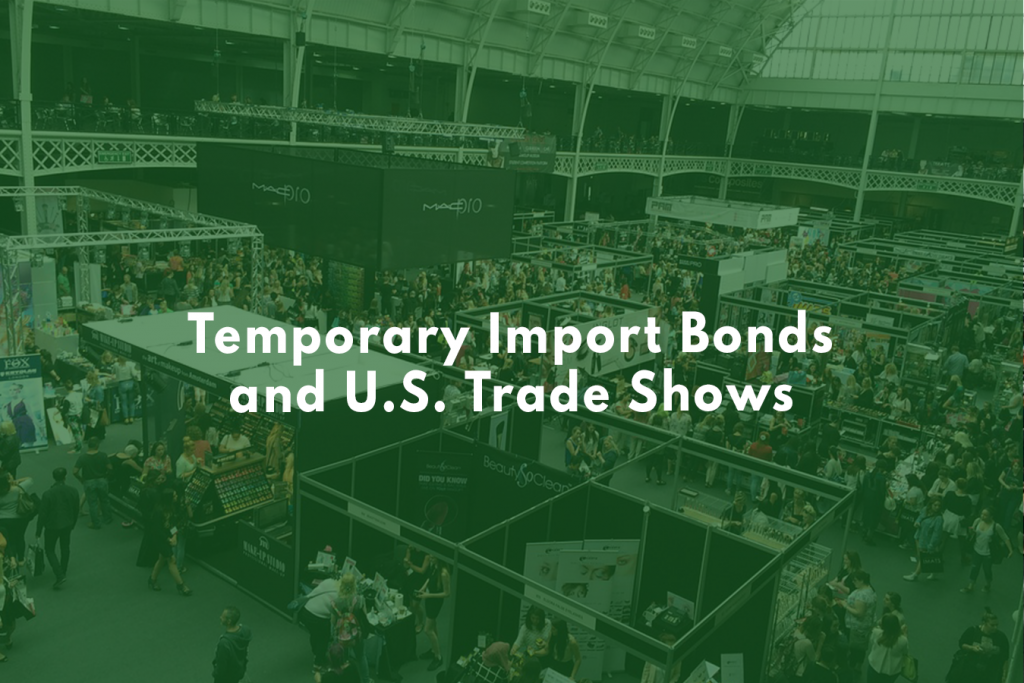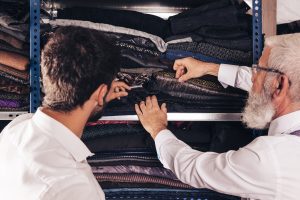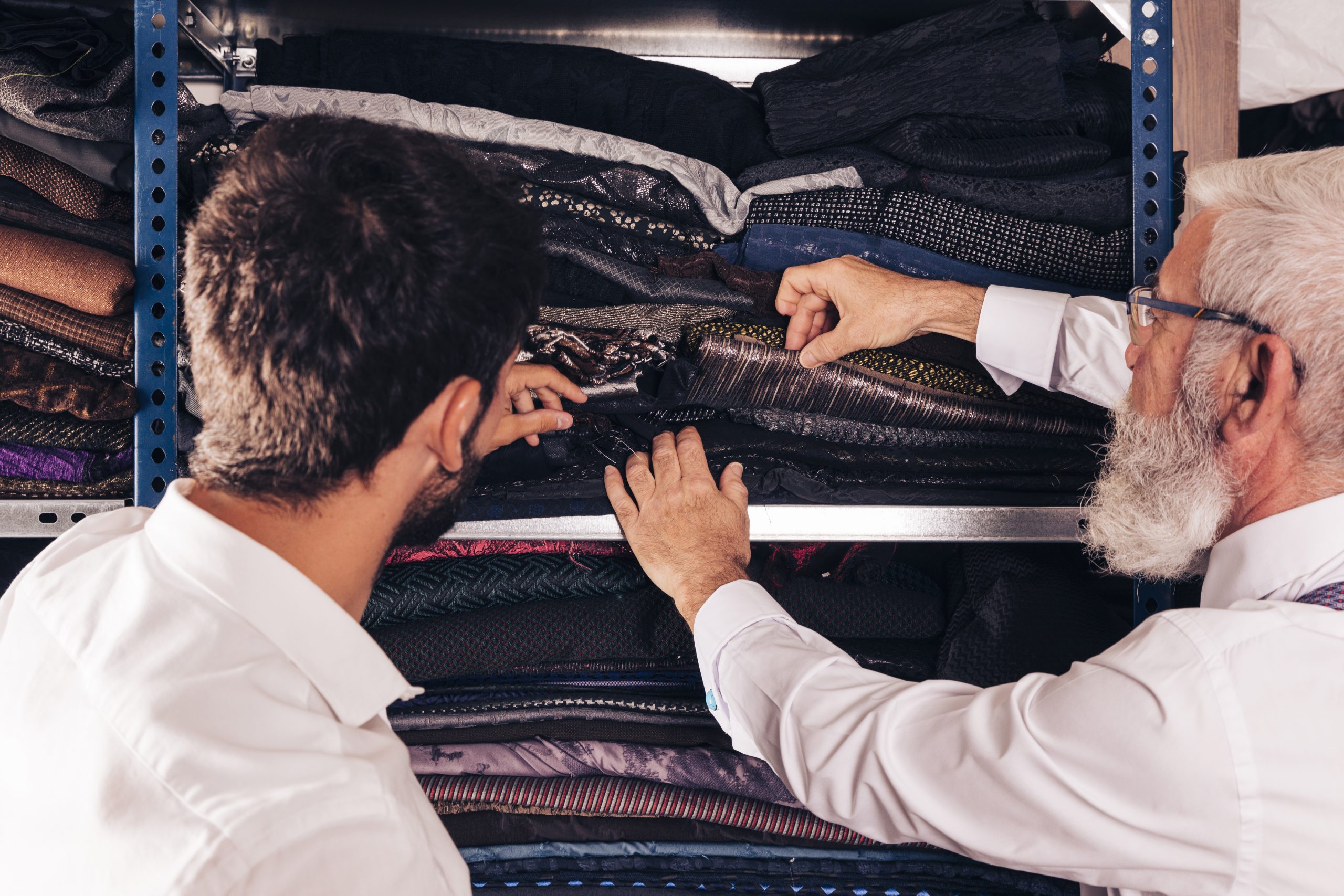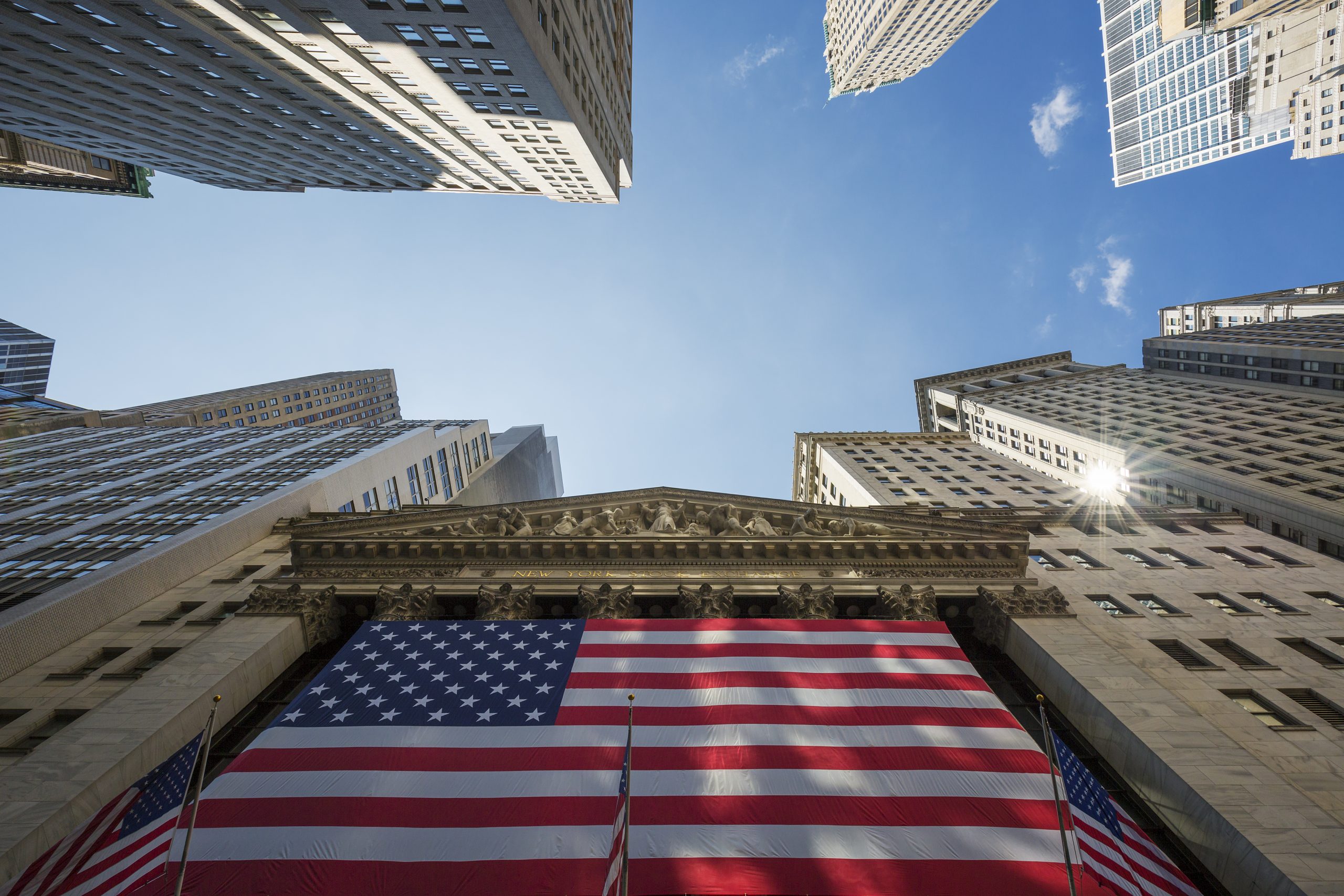Trade shows can bring many new and unique challenges for businesses. Whether you’re an experienced importer/exporter or not, participating in a trade show can leave you scratching your head. You may have heard that using a temporary import bond is the right way to go, but what exactly does that mean? Here’s an introductory guide on temporary import bonds and some helpful tips for importing trade show products.
What is a temporary import bond?
A customs bond is essentially an insurance policy that guarantees that the U.S. government will be paid for the duties and taxes owed on your imports. Bonds are required for imports of $2,500 USD or more, or for certain kinds of imports regardless of their value. For example, food imports always need a customs bond in addition to FDA requirements. To get a customs bond, an importer needs to contact a surety licensed by the Department of the Treasury. You can find one on the official list of licensed sureties. Many people opt to do this through a customs broker.
The most common kinds of customs bonds are single entry and continuous entry bonds. You can find more information about these two kinds of bonds on another one of our blogs. Temporary import bonds are less frequently used, but they can be extremely useful in the right situation.
A temporary import bond, or TIB, is basically an agreement between an importer and the U.S. government. The importer agrees that the goods being imported will not enter American commerce, and the government agrees not to hold you to fees and duties. Usually, temporary import bonds cost double the dutiable amount. Let’s say you’re importing $5,000 USD worth of goods. Your temporary import bond would hold you liable for $10,000 USD.
Once you’re done with the goods you imported under the TIB, you must re-export or destroy them under CBP supervision. After this, you are relieved from liability. A temporary import bond must be filed within 15 days of the goods arriving in the U.S.
In most cases, a temporary import bond is good for one year. The imported goods must be exported within that time frame. Some temporary import bonds allow for extensions of up to three years, though you need to apply for this. A temporary import bond must be filed within 15 working days of the goods arriving in the country.
Not all goods are eligible for a temporary import bond. You can use the HST search website to check the type of goods you want to import and find out if they qualify. We can tell you that the only TIB-eligible goods are those listed in subheadings 9813.00.05 through 9813.00.75. We’ve also simplified the list, and other information, in our blog on temporary import bonds.
Using a temporary import bond for a trade show
If you’re looking to display your products at a U.S. trade show, you’ll want to know some of the best practices on how to import for a trade show. As you’ve probably guessed, we recommend making use of temporary import bonds for importing trade show products.
Since trade shows are usually for promotion, it’s likely that most of what you import won’t be sold. On-site sales aren’t completely ruled out from trade shows, but more often than not you’ll be giving away samples or leaving with most of the goods you had at your booth.
The biggest part of a trade show display is the booth. Trade show veterans know that having an eye-catching table makes a big difference. This means you might be importing furniture, banners, decorations and even extra lighting to achieve the client-facing image you want. Office equipment, computers, and tablets are common too. Since the value of the items that make up your stand will likely exceed $2,500 USD, you should be using a temporary import bond. If your product is for display purposes only, like a machine or some type of clothing, you’ll want to use a temporary import bond for that as well.
If you’re importing trade show products that will be given away at the event, they can’t be included in the temporary import bond. You’ll need to use a separate ‘consumption entry bond’. Even though the items aren’t being sold, they’re still entering the U.S. economy. This includes anything from brochures, hats, and stationary, to free samples of your product. You’ll also need to get a licence or permit from the appropriate agency if you intend to bring snacks or samples of food or alcohol.
Keep in mind that if you don’t export or destroy the goods, you will forfeit what you agreed to pay for the bond and you’ll have to pay the duty and taxes that you avoided by using the temporary import bond. Failing to do this (with proof) would cost you much more than what you were trying to save and could really hurt your bottom line.
Tips for importing trade show products
Securing a temporary import bond isn’t all you need to have a successful trade show booth. The CBP has a list of recommendations to check out, and we’ve also added some other handy tips to that.
-
- Organize your imports: make a list of everything you’re planning to import and separate everything you’ll be leaving behind (samples, flyers) and everything you’ll be bringing back. A list will help you understand what needs a temporary import bond and what needs a consumption entry bond.
- Make sure your goods can be imported: double check that everything you’re bringing is eligible for import, and make sure you have the right licenses or permits if you need them.
- Don’t import goods you can get at your destination: Many items you need for your booth won’t need to be imported. Water bottles and snack foods that aren’t related to your product should be purchased locally. Cleaning products should also be purchased upon arrival. Simple items like sanitizer or glass cleaner would require additional Toxic Substances Control Act (TSCA) clearance, and this could cost you extra time at the border.
- Proper Packaging: The U.S. customs have specific laws regarding the packaging and labeling of imported goods. Make sure that your imports meet those requirements to avoid being turned away.
- Mark items that aren’t for sale: Anything that you import under a temporary import bond should not be for sale or giveaway. You will already be separating your temporary import goods from your consumable goods, but make sure to clearly mark which ones are which. If you don’t, a CBP officer may mark them him or herself in a way that renders your goods unusable.
Whether you’re getting ready for your first trade show or looking for ways to improve your current operations, Clearit is here to help you. Our team is trained to handle everything that goes into importing and exporting for trade shows. If you have any more questions, don’t hesitate to get in touch with us today.






